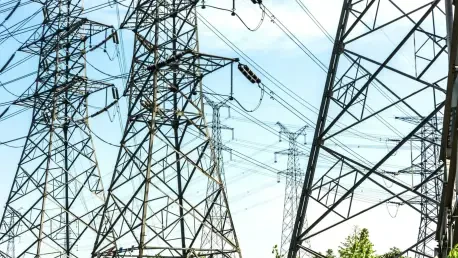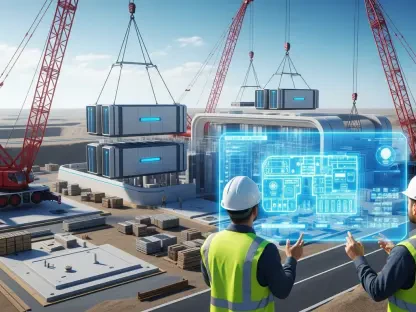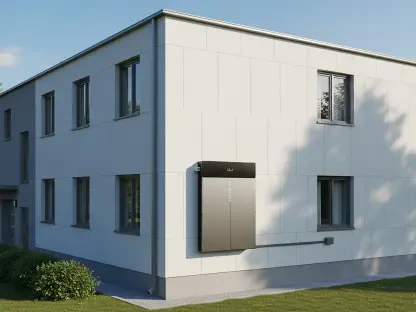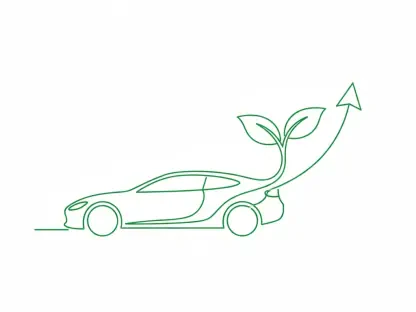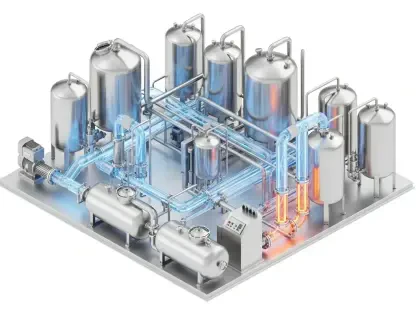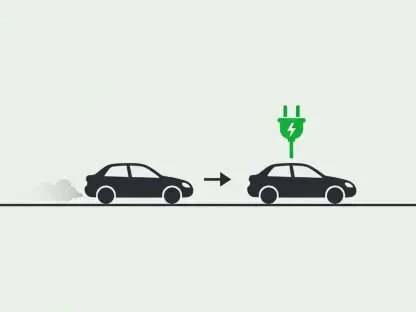In today’s discussion, we engage with Christopher Hailstone, a seasoned expert in energy management and renewable energy, to delve into the recent collaboration between tech giant Google and conductor manufacturer CTC Global. This partnership aims to revolutionize the efficiency and capacity of the U.S. electric grid using advanced conductor technology. Hailstone provides insights into how these modernized transmission systems can bolster America’s energy landscape, align with Google’s strategic objectives, and potentially enhance the country’s AI capabilities.
Can you provide an overview of the partnership between Google and CTC Global?
Google and CTC Global’s partnership focuses on enhancing the efficiency of the U.S. electricity grid by deploying advanced conductors. These conductors have a higher capacity than standard ones and utilize existing infrastructure, such as towers and poles, minimizing the need for new constructions. The collaboration seeks to identify optimal areas for installation, particularly near Google’s data centers, to support their electrical load and operational growth.
What are advanced conductors, and how do they differ from standard transmission lines?
Advanced conductors are designed to carry more electricity over existing transmission infrastructure, addressing capacity issues without expanding physical facilities. Unlike standard lines, they are capable of optimizing the current transmission system, being more efficient in terms of energy delivery, which helps combat the challenges of increasing electricity demand.
Why is the partnership targeting states, utilities, and transmission developers to identify areas for deploying advanced conductors?
The partnership aims to leverage the knowledge and resources of states, utilities, and developers to pinpoint areas with the highest potential benefits from advanced conductors. These entities are crucial in understanding local infrastructure needs and can provide insights on where new technology will have the most immediate and impactful improvements.
What is the Request for Information process, and why have Google and CTC Global initiated it?
The Request for Information (RFI) process is a call to states and utility providers to share potential sites for deploying advanced conductors. Initiated by Google and CTC Global, this step is crucial for gathering preliminary data to inform project feasibility and effectiveness, ensuring the planned projects align with strategic grid upgrades and operational needs.
How will the partnership prioritize projects, and what factors will determine which projects are chosen?
The partnership will prioritize projects based on their potential to quickly enhance grid capacity and support areas with significant load demands, particularly where Google operates. Factors like immediate impact, alignment with infrastructure plans, and the potential for economic and operational efficiency gains will guide the selection process.
Can you explain the Federal Energy Regulatory Commission’s Order 1920 and its relevance to advanced conductors?
The Federal Energy Regulatory Commission’s Order 1920 mandates that transmission providers consider innovative solutions like advanced conductors to meet grid needs efficiently. This order underscores the importance of these technologies in optimizing existing transmission systems, which aligns perfectly with the goals of Google and CTC Global in their partnership.
How are advanced conductors expected to optimize the transmission system without the need for additional facilities?
By increasing the capacity of existing infrastructure, advanced conductors eliminate the need to build new transmission lines. They improve the efficiency and reliability of power delivery, supporting more significant amounts of electricity as demand rises, all while reducing costs associated with new constructions.
What kinds of support and resources will selected partners and projects receive through this partnership?
Selected partners and projects will benefit from financial assistance, comprehensive workforce training to safely and effectively deploy advanced conductors, and technical support. Additionally, they’ll receive assistance with studies to assess and validate the technology’s integration and performance.
Can you elaborate on the workforce training initiatives related to CTC Global’s ACCC conductors?
Workforce training initiatives will focus on preparing engineers and technicians to implement ACCC conductors effectively. This involves practical training on installation, maintenance, and operational optimization, ensuring that the personnel are well-equipped to handle the advanced technologies.
In the context of this partnership, how will technical project studies help validate the technology’s integration and impact?
Technical project studies will play a pivotal role in assessing the real-world application of advanced conductors. These studies will analyze integration with current infrastructure, measure performance improvements, and identify any challenges, providing vital data to refine and enhance deployment strategies.
What does CTC Global’s CEO mean by a “positive turning point” for U.S. electricity costs and economic growth?
The CEO emphasizes that implementing advanced conductors can significantly reduce electricity costs by increasing grid efficiency and capacity. This efficiency can stimulate economic growth by providing a more stable and cost-effective power supply, underpinning industrial and technological advancements across various sectors.
How does this initiative tie into the broader goal of U.S. energy dominance?
By optimizing the grid and reducing reliance on new infrastructure, the initiative strengthens the U.S.’s position in energy innovation and sustainability. It supports self-reliance by making better use of domestic resources, enhancing the country’s competitive edge in the global energy market.
In what ways could the deployment of advanced conductors contribute to the AI revolution in the United States?
Advanced conductors can support the massive energy needs of AI technology, facilitating energy-intensive data processing and storage. By ensuring reliable and efficient electricity supply, they create a foundation for advancing AI applications, which are increasingly integral to various U.S. industries.
What role does Google’s operation of data centers play in this partnership?
Google’s data centers are central to this initiative, as they are heavy electricity consumers needing continuous and scalable power supply. The deployment of advanced conductors at these sites aims to meet the growing energy demands sustainably and efficiently, directly supporting Google’s operational goals.
How do the objectives of this partnership align with Google’s overall business strategy?
The partnership aligns with Google’s commitment to sustainability and operational efficiency. By investing in infrastructure that supports a low-carbon future and enhances grid reliability, Google advances its environmental goals while securing the energy needs critical for its expansive digital infrastructure.
Do you have any advice for our readers?
Stay informed about innovations in energy technology, as they have far-reaching implications for the economy and environment. Embrace sustainable practices and support policies and technologies that drive efficiency, as they are crucial for a resilient energy future.
